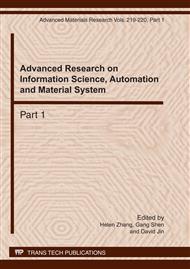p.736
p.742
p.746
p.750
p.754
p.762
p.766
p.770
p.774
Prediction Model of Least Squares Support Vector Machine of Increased Memory Type Based on GA and Quadratic Renyi-Entropy
Abstract:
In order to improve the accuracy of financial achievement, this paper applies a new forecast model of the Increased memory type least squares support vector machine base on neighborhood rough set and quadratic Renyi-entropy on the basis of the traditional support vector machine prediction model. The paper also independently derives the entropy fit for the financial distress prediction which is in discrete sequence, as well as the expression of support vector machine kernel function. The experimental results show that the improved model is significantly superior to the traditional LS-SVM as well as the standard support vector machine prediction model, regardless of the forecast accuracy , training samples number.
Info:
Periodical:
Pages:
754-761
Citation:
Online since:
March 2011
Authors:
Price:
Сopyright:
© 2011 Trans Tech Publications Ltd. All Rights Reserved
Share:
Citation:


